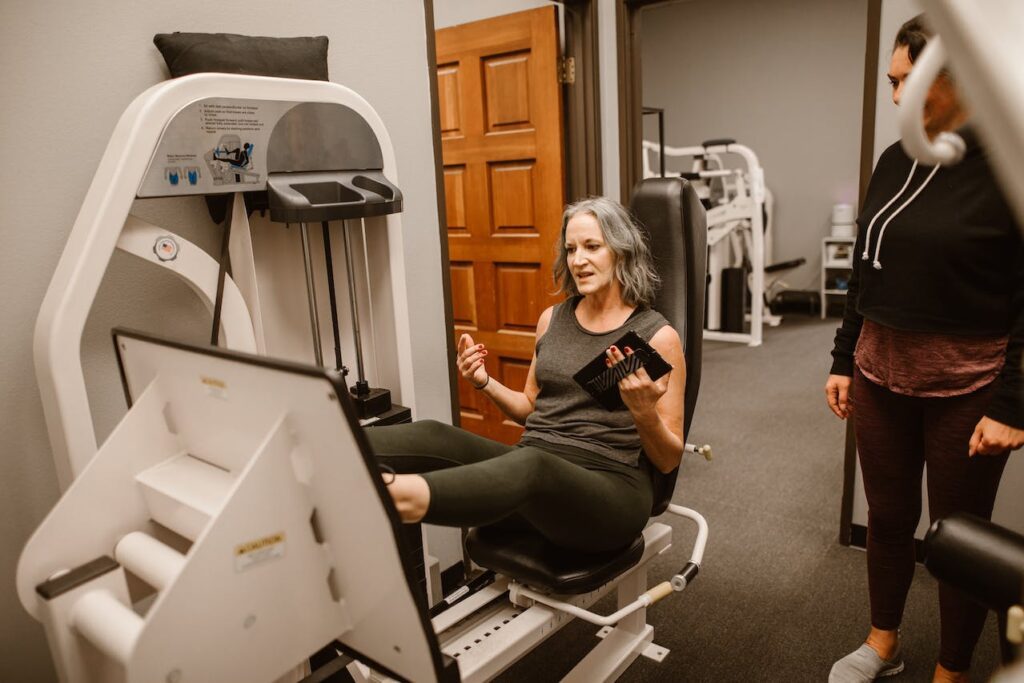Menopause is a transitional stage in women’s lives that is often accompanied by some physical and emotional changes that can affect women’s health and well-being.
These changes include weight gain, loss of muscle and bone mass, risk of cardiovascular disease, decreased libido, hot flushes, insomnia, anxiety, and depression.
If you are going through this stage, you must adopt healthy habits to help you face it with more vitality and quality of life. Today we would like to talk to you about one of the most important ones: exercise. However, it must be an activity adapted to the special needs of the period you are going through.
Benefits of physical exercise in menopause
In menopause, exercise has specific benefits that can counteract some of the negative effects of menopause, such as loss of muscle and bone mass.
Other benefits include:
Help with weight control and prevention of obesity, with all the diseases it brings.
Improve the cardiovascular system and reduce the risk of hypertension, high cholesterol, diabetes, and coronary heart disease.
Stimulate the production of endorphins, which are responsible for our feelings of well-being, pleasure, and euphoria. Thus combating stress, anxiety, and depression, are some of the disorders that are so common at this stage.
Increase self-esteem, self-confidence, and confidence in yourself and your body.
Improve sleep quality, reducing episodes of insomnia, which can affect your daily performance and mood.
Relieve vasomotor symptoms, such as hot flushes and night sweats, which are very uncomfortable symptoms for most women in menopause.

What kind of exercises should I do?
There is no single or ideal type of exercise for all women in menopause. The most important thing is to choose an activity that suits your preferences, needs, and abilities. In addition, a combination of different types of exercise is recommended for all-around benefits.
In general, at least 20 minutes a day of moderate exercise or 10 minutes a day of more intense exercise is recommended.
The most recommended exercise routines for women in menopause are strength training and aerobic exercise.
Strength exercises promote the maintenance and increase of muscle and bone mass, which prevents sarcopenia and osteoporosis. Weight lifting, push-ups, sit-ups and squats are among the most common strength exercises. Do strength exercises at least twice a week.
While aerobic exercises generate a continuous and rhythmic movement of large muscle groups. This improves the cardiovascular and respiratory system, burns calories and balances weight. Examples include walking, running, swimming, dancing and cycling.
But don’t forget to do physical activities that also improve your flexibility and balance.
Flexibility exercises aim to stretch muscles and joints. These exercises improve joint range of motion, prevent muscle and joint injuries and promote relaxation. You can achieve these effects by practicing yoga, pilates or tai chi.
Balance exercises help you to maintain a stable posture in the face of different stimuli. They improve coordination, and agility, which prevents falls. Some examples are walking on a line, standing on one leg, or spinning.
In addition, we recommend taking a supplement to help you get the most out of your exercise routine. Lanier Pharma offers you ALTIUSVIT, which helps to reduce fatigue and restore muscle function. ALTIUSVIT is a studied synergy of Citrulline malate, Glutamine and red Pannax ginseng, which will help you to exercise healthily and safely, in this crucial stage of your life.



